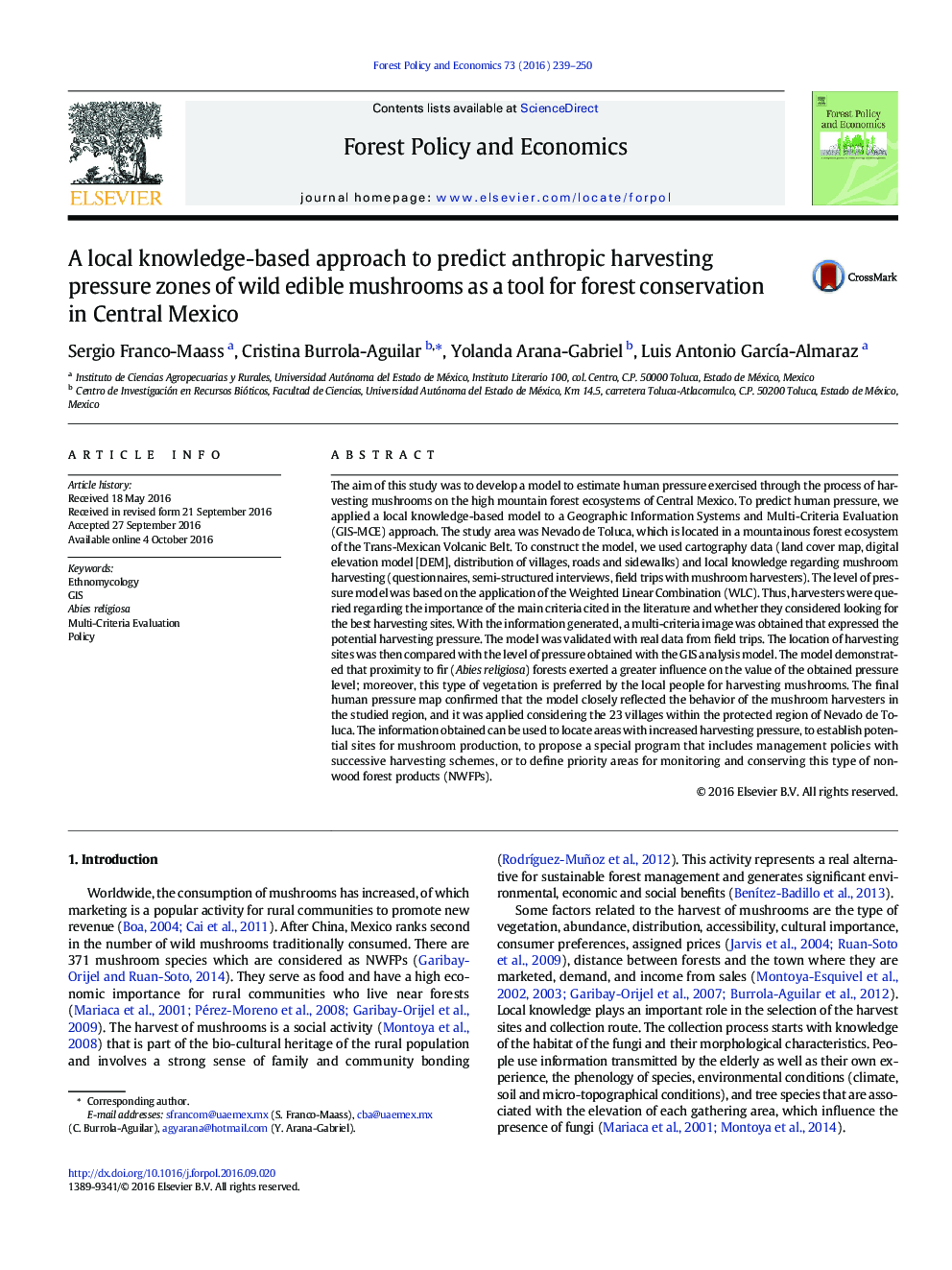| کد مقاله | کد نشریه | سال انتشار | مقاله انگلیسی | نسخه تمام متن |
|---|---|---|---|---|
| 6459861 | 1421666 | 2016 | 12 صفحه PDF | دانلود رایگان |
- Local harvesters have demonstrated an extensive understanding of edible mushrooms and their probable distributions in the regional forests.
- The information obtained from interviews with local harvesters, are a valuable source to be included in the GIS-MCE model and can be used to monitor areas of mushroom production.
- For GIS-MCE model analysis, it is important to include a few categories of land use, since sometimes it is difficult to handle and understand by local harvesters.
- The weights could be used with MCE to create a multi-criteria image expressing the potential harvesting pressure.
- Abies religiosa forest is the type of vegetation preferred by the local people for mushroom harvesting, and considered as a potential area for the management of edible mushrooms.
The aim of this study was to develop a model to estimate human pressure exercised through the process of harvesting mushrooms on the high mountain forest ecosystems of Central Mexico. To predict human pressure, we applied a local knowledge-based model to a Geographic Information Systems and Multi-Criteria Evaluation (GIS-MCE) approach. The study area was Nevado de Toluca, which is located in a mountainous forest ecosystem of the Trans-Mexican Volcanic Belt. To construct the model, we used cartography data (land cover map, digital elevation model [DEM], distribution of villages, roads and sidewalks) and local knowledge regarding mushroom harvesting (questionnaires, semi-structured interviews, field trips with mushroom harvesters). The level of pressure model was based on the application of the Weighted Linear Combination (WLC). Thus, harvesters were queried regarding the importance of the main criteria cited in the literature and whether they considered looking for the best harvesting sites. With the information generated, a multi-criteria image was obtained that expressed the potential harvesting pressure. The model was validated with real data from field trips. The location of harvesting sites was then compared with the level of pressure obtained with the GIS analysis model. The model demonstrated that proximity to fir (Abies religiosa) forests exerted a greater influence on the value of the obtained pressure level; moreover, this type of vegetation is preferred by the local people for harvesting mushrooms. The final human pressure map confirmed that the model closely reflected the behavior of the mushroom harvesters in the studied region, and it was applied considering the 23 villages within the protected region of Nevado de Toluca. The information obtained can be used to locate areas with increased harvesting pressure, to establish potential sites for mushroom production, to propose a special program that includes management policies with successive harvesting schemes, or to define priority areas for monitoring and conserving this type of non-wood forest products (NWFPs).
Journal: Forest Policy and Economics - Volume 73, December 2016, Pages 239-250
